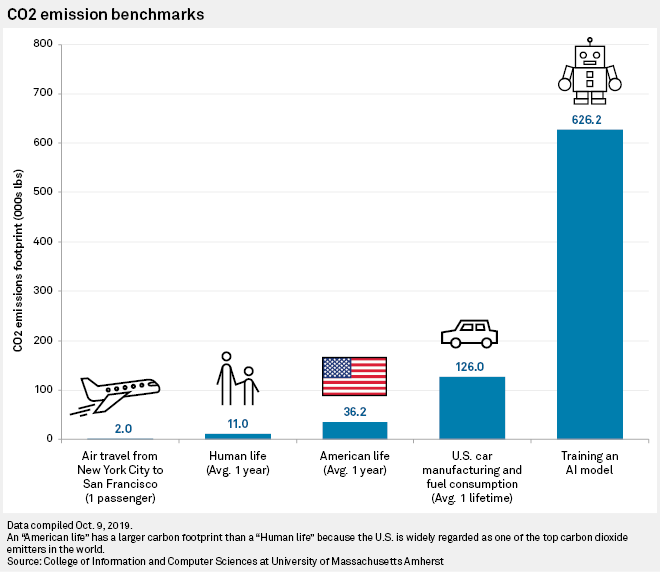
A 2019 article by researchers from University of Massachusetts Amherst quantifies the approximate financial and environmental costs of training a variety of AI tools, and offers their recommendations to lessen harmful global impact.
Newer AI models are getting bigger – and more energy intensive. Bigger models require the use of more and more powerful graphics processing units (GPUs), and take longer to train – using up more resources and energy.
Errors in artificial intelligence algorithms and decision-making processes lead to environmental injustice and inequality
AI technologies may disrupt natural ecosystems, jeopardizing wildlife habitats and migration patterns
Freshwater Usage
One non-peer-reviewed study, led by researchers at UC Riverside, estimates that training GPT3 in Microsoft’s state-of-the-art US data centers could potentially have consumed 700,000 liters (184,920.45 gallons) of freshwater. In the absence of accurate, public data, the researchers had to assume the “water use effectiveness”, or the ratio of energy a data center uses and the water used to keep it cooled and functioning, based on Microsoft’s self-reported average.
The International Energy Agency estimates that by 2026 electricity consumption by data centers,
cryptocurrency, and artificial intelligence could reach 4% of annual global energy usage
(roughly equal to the amount of electricity used by the entire country of Japan)
“What is different about generative AI is the power density it requires. Fundamentally, it is just computing, but a generative AI training cluster might consume seven or eight times more energy than a typical computing workload.” Noman Bashir, Computing and Climate Impact Fellow at MIT Climate and Sustainability Consortium
Bashir, N., Donti, P., Cuff, J., Sroka, S., Ilic, M., Sze, V., Delimitrou, C., & Olivetti, E. (2024). The Climate and Sustainability Implications of Generative AI. An MIT Exploration of Generative AI. https://mit-genai.pubpub.org/pub/8ulgrckc/release/2
Li, P., Yang, J., Islam, M. A., & Ren, S. (2023). Making AI less "thirsty": Uncovering and addressing the secret water footprint of AI models. (). Ithaca: Cornell University Library, arXiv.org. https://doi.org/10.48550/arxiv.2304.03271
Liao
Shirvell, B. (2024). Can We Mitigate AI's Environmental Impacts? Yale School of the Environment News. https://environment.yale.edu/news/article/can-we-mitigate-ais-environmental-impacts
Strubell, E., Ganesh, A., & McCallum, A. (2019). Energy and policy considerations for deep learning in NLP. (). Ithaca: Cornell University Library, arXiv.org. https://doi.org/10.48550/arxiv.1906.02243
Zhuk A. Artificial Intelligence Impact on the Environment: Hidden Ecological Costs and Ethical-Legal Issues. Journal of Digital Technologies and Law. 2023;1(4):932-954. https://doi.org/10.21202/jdtl.2023.40
Zewe, A. (2025). Explained: Generative AI's Environmental Impact. MIT News. https://news.mit.edu/2025/explained-generative-ai-environmental-impact-0117
There are also AI powered tools with the potential to address several environmental challenges such as climate modeling, renewable energy optimization, sustainable agriculture, disaster prediction & response, and conservation efforts.